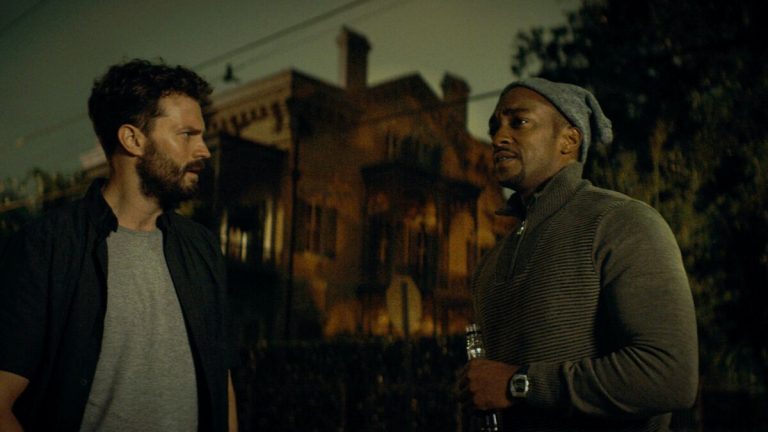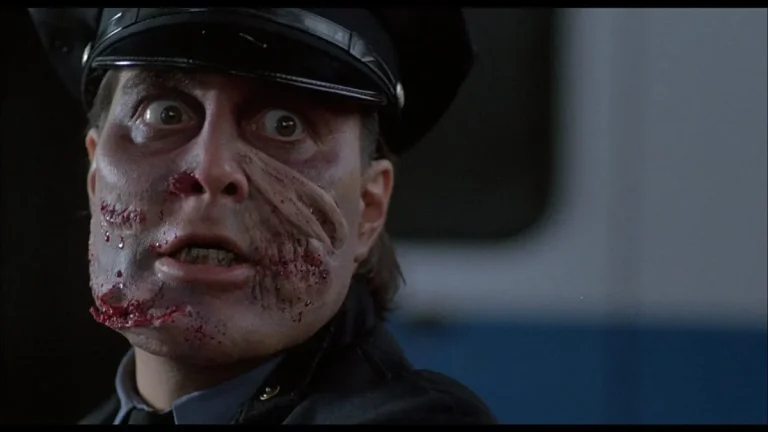Based on the bestselling biography by Jeanne Theoharis, this essential documentary now streaming on Peacock is based upon the ‘mother of the Civil Rights movement’- Rosa Parks. Executive produced by the award-winning journalist Soledad O’Brien, the 96-minute documentary shows the female icon’s lifelong dedication to activism. The makers not only chronicle the historic role she played in the Montgomery Bus Boycott but also shed light on her much more nuanced and important work in politics alongside Congressman John Conyers in the state of Detroit.
Directors Yoruba Richen and Johanna Hamilton expertly weave together interviews from many great academics, historians, and activists such as Francis Gourrier, Bryan Stevenson, Patrisse Cullors, and Ericka Huggins, along with personal stories from her own family. We also get remarkable footage of Mrs. Parks herself, along with her archived narrations and interviews to break myths around her, thus illuminating her decades-worth of extensive organizing and activism in the pursuit of Black liberation in American history.
Fiercely dedicated to correcting the frequent minimizing of her accomplishments and the erasure of her radical politics, this powerful documentary recognizes the strong woman’s work in the Civil Rights movement and thus, celebrates one of America’s greatest heroes to ensure that her legacy lives on. It highlights the selflessness of its subject without glorifying it and seeks to provide a detailed portrait of a personality who, through the vagaries of history, was frequently reduced to a symbol. “She didn’t want the awards. She didn’t want the money. She didn’t want the fame,” James McCauley states. “Interviewers still only want to talk about that one evening in 1955 when I refused to give up my seat on the bus,” she notes, an observation made long after she had become famous. Here’s a deeper breakdown of the documentary.
The Rebellious Life of Mrs. Rosa Parks DOCUMENTARY EXPLAINED:
Rosa Parks: A soldier from the birth
The film opens with Miss Parks featured on the famous quiz show “To Tell the Truth,” where the celebrity panelists struggle to identify her, making random and condescending assumptions about her quiet dignity. As Parks’ great nephew, Lonnie McCauley, then notes, Parks was hardly an idle bystander in the entire movement but rather ‘a soldier from birth’. Through portions of her writing as read by LisaGay Hamilton, we get to know about the discrimination from the whites that permeated through the entire south region in those days. “I’ve never gotten used to being a public person,” Parks says while noting that in all her talks with reporters through the years regarding the act of silent defiance that launched the Montgomery bus boycott in 1955 — refusing to go to the back of the bus to give her seat to a White patron — she ‘never told anyone’ it was because her feet were tired.
Early Life
Starting first with the year 1919, we learn from historian Francis Gourrier talks about the Ku Klux Klan, and how the early 20th century was generally considered by some even worse than the era of slavery. “The early 20th century, this is the period that is often referred to as the nadir, the low point in African American history. Some people even argue that it’s a period worse than slavery,” he tells. We soon learn more about Rosa’s point of view growing up in the midst of turbulent times through Georgette Norman, the former director of the Rosa Parks Museum. Just by the age of six, Parks realized that she was not free. She would sit up all night with her grandfather, who kept a gun nearby in order to defend against the Klan. She once even said: “My grandfather was the one who instilled in my mother that you don’t put up with bad treatment from anybody. It was passed down almost in our genes.”
Parks And the NAACP
As a young woman, Rosa Parks set off on a path that would put her right in the midst of the civil rights movement. It was here when she came across Raymond Parks, a barber, and a longtime NAACP activist. According to her, he was the first man she had met since her grandfather’s death who ‘was not ready to accept what we call bowing and scraping and yes-yessing. Through this, we learn of Raymond’s politics, and eventually of how Rosa Parks got influenced by it. One of the first cases that got them involved in the real world of politics, was of the Scottsboro Boys. The case marked the first stirrings of the civil rights movement, leading to two landmark Supreme Court rulings that established important rights for criminal defendants. Nine young black Alabama youths – ranging in age from 12 to 19 – were charged with raping two white women near the small town of Scottsboro, Alabama. We learn of how these two women had made these claims and allegations just to serve themselves. The black men would then be tried for crimes they hadn’t committed.
In 1932, Mr. Nixon set up the Voter’s league in Montgomery and explained to Rosa Parks the need to get registered. She was incredibly impressed by his leadership, and thus for the first time understood how the step was important in gaining the increased ability to become first-class citizens in the US. It was also in the December of the same year that Rosa and Raymond married each other, after which the couple moved to Montgomery where she attended her first NAACP meeting and wound up being elected secretary of the branch that same day.
The Case Of Recy Taylor
Parks then immersed herself in a variety of assignments. She worked on voter registration, led the NAACP youth groups, and investigated brutal attacks against Black women, the key one being the rape of Recy Taylor. She was raped in 1944 by six white men in Alabama. The movie also explains how, as a young maid, Rosa Parks was pressured by a white employer, named Mr. Charlie, who said ‘he had money to give me for accepting his attention.’ She had told him he would have to kill her first in order to get there. She wrote that she was willing to die, but “give my consent? Never, never, never.”
The 1944 case of Mrs. Recy Taylor who was raped in the September of that year quickly spurred by 1945, leading both Nixon and Parks to run for branch leadership. Parks runs for the Secretary position and ends up winning. Then we get to the famous Montgomery Bus Boycott. The makers of the documentary painstakingly give us a complete, yet nuanced picture of Parks’ refusal to give up her seat on a city bus to a white man- an incident that sparked the yearlong boycott in the mid-1950s. Parks knew that the NAACP needed to find the right plaintiff in order to file a successful lawsuit that would sprout into their win. She also was well aware that once she was arrested, she would have no way of knowing what would happen next or whether she would be beaten. The boycott soon led to people switching to the car-pooling system as a form of protest that showcased their combined unity. Black women stood at the forefront of the entire moment, and eventually, the economy took a hit as the movement gained momentum.
Rosa Parks’ history with the segregation movement
In March of 1955 – nine months before Rosa Parks defied segregation laws by refusing to give up her seat to a white passenger on a bus in Montgomery, Alabama- the 15-year-old Claudette Colvin did exactly the same thing. Eclipsed by Parks, her act of defiance was largely ignored for many years. Parks helped fundraise for the boycott of the mid-50s and the collective belief helped strengthen their unity.
We even get footage of the White Citizens’ Council, which was basically a more sophisticated version of the Klan that stood against desegregation. They indirectly ordered many opposition voices’ houses to be burned. The Council, after originating in Mississippi, generally spread across the country attracting the white economic and political elites of the Deep South’s Black Belt counties. It later even made some inroads among blue-collar whites in the cities as well.
The rough times in the lives of the Parks family
1959 soon became the worst year for the Parks family overall, as they had an annual income of just 700 dollars. Later, after going through decades-long of troubles fighting for civil rights, Mr.Parks, unfortunately, died of cancer. Then in 1985, the Detroit branch of the NAACP called a boycott against the whole of Dearborn businesses as the mostly white Detroit suburb reneged on an agreement that would have permitted non-residents to use its parks. Joe Madison, the national director for NAACP voter education, had said of how Detroiters used the parks in Dearborn and other suburbs because they were convenient to border areas, and that even suburbanites used Detroit parks. As narrated by the activist, they later went to the Michigan Supreme court, and the move was ruled unconstitutional. ″The issue transcends a seat on a park bench and the issue of race; it deals with individual rights,″ Madison had said.
The Rebellious Life Of Mrs. Rosa Parks Documentary Ending, Explained:
As the documentary drives to a close, having given us a detailed insight into her life, we hear from some of the closest people to hers how Parks was always deeply spiritual, driven by the thought that we all have a purpose in life. Upon her death in 2005, Rosa Parks became the first woman, the first civilian to lie in honor in the nation’s capital in the presence of the president of that time and many other important American figures. Later in 2013, at a dedication ceremony that was attended by dozens of Mrs. Parks’s relatives, President Obama, and Congressional leaders paid tribute to Mrs. Parks, whose act of defiance and work in the civil rights movement helped spur desegregation across the country and the passage of the Voting Rights Act. Rosa Parks was at the march all the way from Selma to Montgomery, which was a part of the move to get the Votings Right Act of 1965 passed. But ironically on the very same day, the country was enhancing voter suppression while inaugurating her statue.
Historian Mary Frances Berry expands on this further, suggesting not an easy fix but a smokescreen. That day, oral arguments were heard in the Shelby v. Holder Supreme Court case, which gutted the Voting Rights Act that year. “The irony is that Rosa Parks was at the march from Montgomery to Selma, and was part of the movement to get the Voting Rights Act passed in the first place,” Berry says. “And here they are enhancing voter suppression on that same day.” Fellow historian Robin D. G. Kelley describes the statue as an “erasure” of her legacy. Thus, this essential film ends on a rather grim note, reminding us that the evil Parks fought all those years back still needs some necessary checks and pushback in current times. Jeanne Theoharis, the author of “The Rebellious Life of Mrs. Rosa Parks”, refers to the symbol as a ‘trap.’









